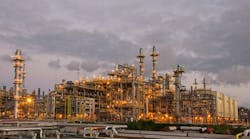The projected growth of Alberta oil sands production, which has in place some 1.75 trillion bbl of resources, is triggering a wave of investments, said Wood Mackenzie Ltd., Edinburgh.
Pipeline companies and refiners plan to invest more than $31 billion by 2015 to export and distribute oil sands products and to process them in the US refining system, based on disclosed project costs. That’s not counting investments in internal pipelines in Alberta, the Canadian refining and upgrading system, or undisclosed refining investment, officials said.
“Overall planned investments are well positioned to ensure sufficient pipeline and refinery capacity to 2015, but any delays to key pipeline projects could result in significant bottlenecks,” warned Lindsay Sword, global refinery research manager for Wood Mackenzie.
The Gateway and Texas Access pipeline developments “could determine the destination of oils sands products in the US and outside North America and influence US import patterns,” Wood Mackenzie reported. Texas Access is a 768-mile, 30-in. diameter pipeline system being built by Enbridge Inc. and ExxonMobil Pipeline Co. from Patoka, Ill., to the Texas Gulf Coast to transport crude from the Canadian oil sands region in Alberta and from the upper US Midwest to refiners in Nederland and Houston, Tex.
The Gateway Pipeline is to be built by Enbridge to transport some 400,000 b/d of oil sands crude from near Edmonton, Alberta, to a tanker terminal in British Columbia for shipment to China, other parts of Asia, and to California.
The report forecasts that production of synthetic crude oil and Canadian heavy blends will grow by 2 million b/d during 2008-15, with half to be heavy blends. Wood Mackenzie said incremental pipeline capacity will exceed the new supply through 2015, and new US refinery capacity will keep pace with the expected new volumes.
US Gulf vs. Midwest
According to the report, by 2015 only small volumes of oil sands products will reach the US Gulf, where the vast majority of heavy oils are now processed. “There are two reasons for this: pipeline limitations and the new capacity being built in the Midwest aimed specifically at processing Canadian heavy blends,” said Agustin Prieto, senior downstream analyst for Wood Mackenzie and primary author of the report. “Canadian heavy blends are only likely to reach the US Gulf if projects in the Midwest do not proceed as planned,” he said.
This raises a question over future supply of heavy crude oil in the US Gulf, where a large number of projects are targeting the processing of additional volumes of heavy oils, and where there likely will be strong price competition for Canadian heavy blends, the report said. Pipeline investments are focused on expanding the export capacity to Petroleum Administration for Defense District (PADD) 2, which encompasses the US Midwest, and to the Pacific Coast as well as expanding the domestic US network to new markets in the US Gulf.
“We forecast new and incremental pipeline projects to provide an additional 2.1million b/d of capacity between 2008 and 2015,” Prieto said. “The majority of new refinery capacity to process Canadian heavy blends will be located in PADD 2. Companies are investing in processing oil sands not only because of the new supply but also the attractive price differential vs. conventional light crude oils. BP, ConocoPhillips, and Marathon lead investment plans to process Canadian heavy blends in US refineries: these three companies and their JV partners plan to invest about $13 billion by 2015,” Prieto said.
The report said Canada ranks as having one of the world’s largest oil reserves, behind only Saudi Arabia and potentially Venezuela. Strong growth in oil sands production over the past few years has been an important contributor to global supply and has provided the US with the prospect of a secure source of supply from its neighbor and ally.

